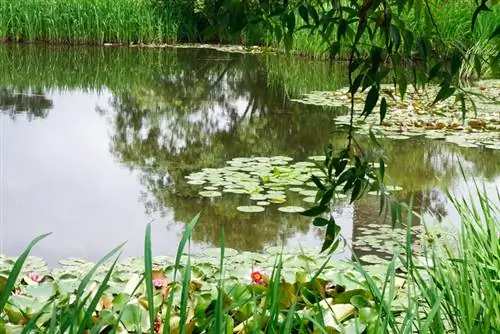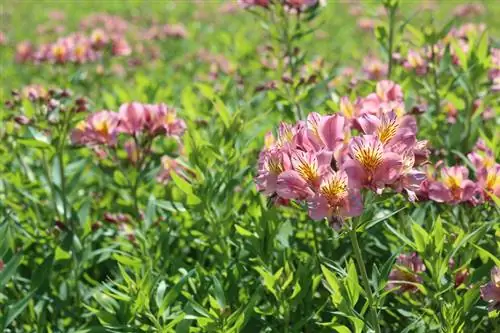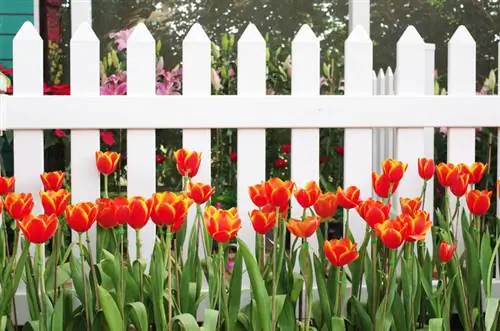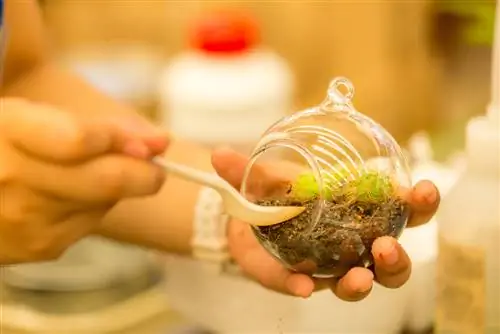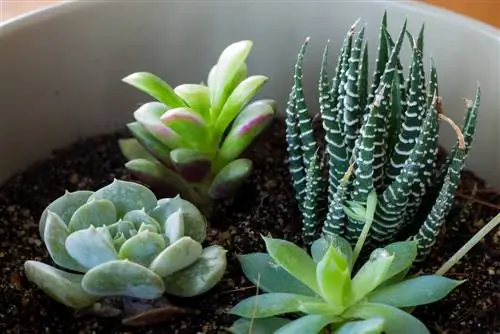- Author admin [email protected].
- Public 2023-12-25 17:45.
- Last modified 2025-01-23 11:20.
Reed is a pretty, densely growing pond plant that can also decorate your home garden pond. However, there are a few basic things you should keep in mind when planting and caring for them. We explain what they are.
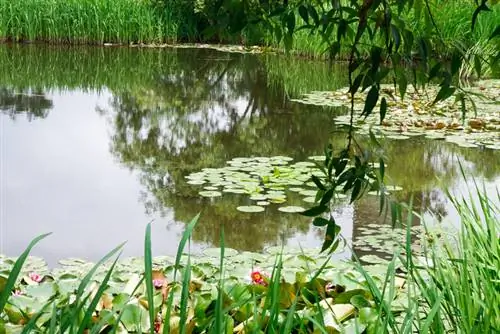
How do I plant and care for reeds in the pond?
Reeds in the pond require little care and have a cleansing effect: they grow densely and produce oxygen every day. Plant reeds with a rhizome barrier to prevent uncontrolled growth. Cut back in spring and tie stalks together before winter.
Planting reeds in the pond
Reeds are extremely proliferative. It is therefore advisable to provide it with a rhizome barrier.
You can, for example, place reeds in the water with a mesh basket (€35.00 on Amazon) and thus prevent them from spreading. If the reeds are planted in soil, for example on the bank, a root barrier should be used. Otherwise you run the risk that the reeds will spread over the entire pond and you will have to laboriously remove them.
Caring for reeds in the pond
Reed is quite undemanding and when it has its feet in the water, you hardly need to pay any attention to it. The nutrients in the pond should be enough so that you can avoid fertilizing.
Caring for reeds is a bit time-consuming only once a year: it has to be cut back in the spring after the winter break. It is important that the reeds have not yet sprouted at the time of pruning. Cut the stalks back to just above the water surface so that the reeds can sprout fresh green.
Overwintering reeds in the pond
Reed is basically hardy, and this also applies to reeds in garden ponds. However, you should take a few precautions to protect the reeds from frost and moisture damage. Before the reed goes into hibernation, tie the stalks together at the top; this protects the plant from moisture and cold. In addition, you should definitely not use scissors before winter! Pruning only happens after winter. If you live in a very cold area where temperatures can drop below -20 degrees and/or your garden pond is quite small so that it freezes completely, it may be advisable to to take the reeds out of the pond and overwinter them in a bucket in the basement or another cool place.
Reed as a sewage plant
Reed not only looks pretty, it also has a strong cleaning effect: per square meter it produces 5 to 12 grams of oxygen per day and thus supplies the pond with sufficient oxygen, which reduces bacteria and creates a he althy environment for flora and fauna creates.

